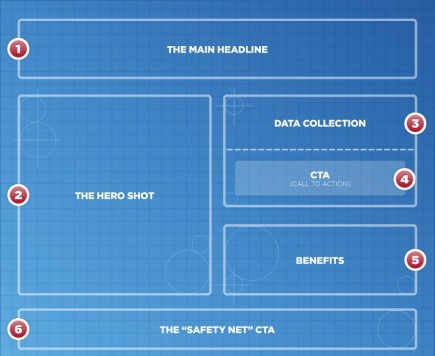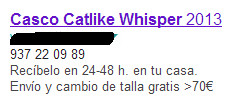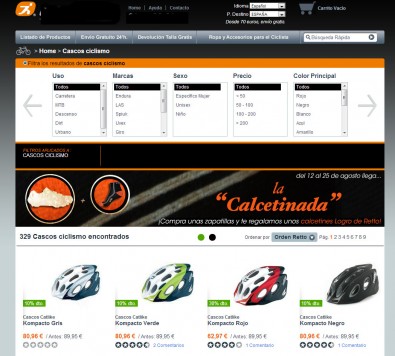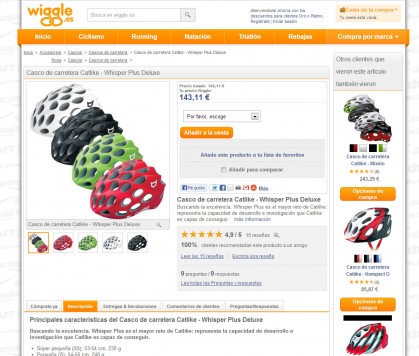Written by David Escolano
In Google Ads the landing page is the first step to achieve a conversion, so it is necessary to pay the utmost importance if we want a user to register in our form, make a purchase or even call us on the phone. To do this we must take into account a number of factors that favor conversion on our landing page, such as ease of navigation, relevance of content and clarity of it.
It is important that the content on the Adwords landing page is related to both the search term and the ad itselfIn this way we will minimize the risk of abandonment of the landing page and help to improve the level of quality, affecting the CPC and position of the ad.
Once the user is on the Google Ads landing page , we must capture their attention by freeing them from any distraction and at the same time build trust in it, for this it is recommended:
- Avoid filling the page with long text content. The message must be relevant, clear and persuasive.
- Highlight the offer with graphic elements that make it more attractive, focusing on the call to action, so that the user will look at the conversion point.
- Highlight the benefits of your product or service. On the landing page we must clearly include the reasons why our product or service is different from the competition’s and mainly what benefits it can bring to the user.
- Add reviews or opinions from other users. The comments and opinions made about our products or services reinforce the credibility and trust of our site, especially if they are positive.
- Include commercial and contact information. The contact information must be visible enough so that the user landing on our page will find it easy to find it.
- Only ask for the necessary data if we include a registration form on the landing page.
- Minimize the loading time to avoid the despair of the user who has clicked on the Adwords ad and reducing the abandonment rate. On the other hand, a long loading time would negatively affect the quality level.
- Include an attractive Call to action looking for a positive response from the user who has landed on our page.
Our chances of obtaining a conversion on the proposed target will increase considerably if we implement these recommendations.
The best way to implement all of these recommendations on how to optimize our Google Ads landing page is by creating a specific page for each ad group. It is much easier for the user to find what he is looking for on a given page than, for example, on the home page itself.
The landing page structure offered by KISSmetrics can serve as a reference for our landing page, in it we can see 6 key points:
- Adwords landing page title .
- Highlighted image of the product or service offered.
- Registration form. This would be our conversion point.
- Call to action of the form. What do we want the user to do on our landing page?
- Benefits offered by our products or services.
- Second call to action. In this case, this call is aimed at those users who are not willing to convert at the moment. As a second call we could add the buttons of our social profiles, either Pinterest, Twitter, Facebook or Google Plus.
Speaking of examples, let’s look at one:
If we search Google for the term “catlike whisper plus helmet”, the search engine shows us several Adwords ads, including the following:
Clicking on the first one, the landing page is the cycling helmets section, which includes brands and models of all kinds, hence the information is not entirely accurate.
In this case, we have two options: to invest more time and continue searching for the product within the portal, which I doubt, or to abandon the page.
A different result is obtained if we click on the second Adwords ad, where the landing page refers exclusively to the searched model. In this case, information about the product, user reviews and ratings, as well as delivery and return methods are also provided.
Which Google Ads landing page is most likely to convert the visit into a purchase?




